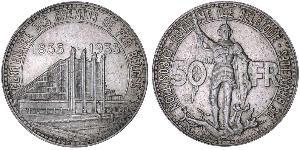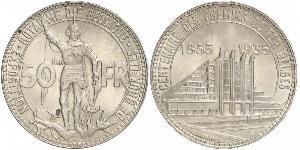1 Thaler (Venduta per $122.0)
1786, Bavaria, Charles Theodore. Large Silver "Madonna" Thaler Coin. XF+
Mint Year: 1786 Mint Place: Munich Denomination: Silver Thaler Reference: Davenport 1964, KM-563.1. Condition: Weight-adjusting marks in reverse, minor scratches, otherwise a beautifully toned XF+ Diameter: 41mm Material: Silver Weight: 28gm
Obverse: Bust of Charles Theodore (Karl Theodor) right. wearing Order of the Golden Fleece and cross order right. Legend: CAR . TH . D . G . C . P . R . V . E . D . S . R . I . A . & . EL . D . I . C . & . M . Comment: Engraver´s initials (I.SCH.) inside arm truncation. Reverse: The Virgin (Madonna) seated in clouds, holding baby-Jesus child and cross-topped orb in left hand and scepter in right hand. Legend: PATRONA BAVARIAE . / 1786 . Edge Legend: CONFIDO IN DOMINO
Charles Theodore, Prince-Elector, Count Palatine and Duke of Bavaria (German: Karl Theodor) (December 11, 1724 – February 16, 1799) reigned as Prince-Elector and Count Palatine from 1742, as Duke of Jülich and Berg from 1742 and also as Prince-Elector and Duke of Bavaria from 1777, until his death. He was a member of the House of Palatinate-Sulzbach, a branch of the House of Wittelsbach.
Karl Theodor was a great lover of the arts, including drama and especially music. His Mannheim court orchestra was considered one of the finest in its time. The Mannheim School (including composer Christian Cannabich and conductor Johann Stamitz) did groudbreaking work that the celebrated Wiener Klassik would later draw upon. Mozart applied for a position with the Mannheim orchestra in 1777, but was turned down, as the court was about to move to Munich. In 1780, Karl Theodor commissioned Idomeneo from the composer. Mozart quotes him as saying "No music has ever made such an impression on me. It is magnificent." (David Cairns, Mozart and his operas, 2006, p.48)
In keeping with the customs of the time, an Italian opera company as well as a troupe of French actors were employed at Mannheim, each performing in their respective tongues. Later, the Nationaltheater (national theatre) was established, one of the first theatres in Germany to exclusively showcase plays in the native tongue (most notably, the first staging of Schiller's "Die Räuber" in 1782).
In the visual arts, a massive collection of plaster casts taken from celebrated antique works was assembled at Mannheim. The preexisting Düsseldorf gallery, including many works by Rubens, was first transferred to Mannheim, then to Munich, where it was later incorporated in the Alte Pinakothek. While none of the Mannheim painters are particularly notable today (with the possible exception of Kobell, primarily a master of landscapes), the elector had several highly talented sculptors at his disposal, among them Verschaffelt, Simon Peter Lamine and Konrad Linck. Linck also distinguished himself as a designer of porcelain figurines at Frankenthal.
Karl Theodorâ€â"¢s chief architect Nicolas de Pigage was charged to complete the Mannheim Palace, design the gardens at Schwetzingen Palace ( including numerous pavilions, among them several artificial â€Å"Roman� ruins and a â€Å"mosque�) as well as Benrath palace. While these works are in a pure contemporary French style (marked by the transition from late Baroque to early classicism), some of the other architects employed by Karl Theodor were proponents of a more Italianate style. This mixture of influences is, in fact, typical of many German courts of the period.
Karl Theodor liked to style himself as a prince of peace, in contrast to other princes like his chief political opponent, the great warrior Frederick II of Prussia. Allegorically, Minerva, the Roman goddess of wisdom and protectress of the arts, is often depicted as a stand-in for the elector himself. This self-view is best summed up in the inscription of a small monument at Schwetzingen:
â€Å"A field of war and death of Romans and Germans has been discovered, through the unearthing of weapons, urns and bones, in the year 1765. - To the arts of peace, which are the sole joys of his life, the elector Charles Theodore has dedicated this spot, excavated to the height of seven feet, and had this monument erected in 1768.�

|
Postato da:
anonymous 2018-10-29 |
|
||
|
||
|
||
|
||
|
||
50 Franc Belgio Argento
il gruppo ha 34 monete / 33 prezzi
⇑

-600-300-3UTZC4KOyDUAAAFmntWYvr5o.jpg)

-300-150-1xEKbzbiETwAAAFRTNlau0Vf.jpg)
 Deutsch
Deutsch Русский
Русский Українська
Українська English
English Italiano
Italiano Français
Français Español
Español 汉语
汉语














